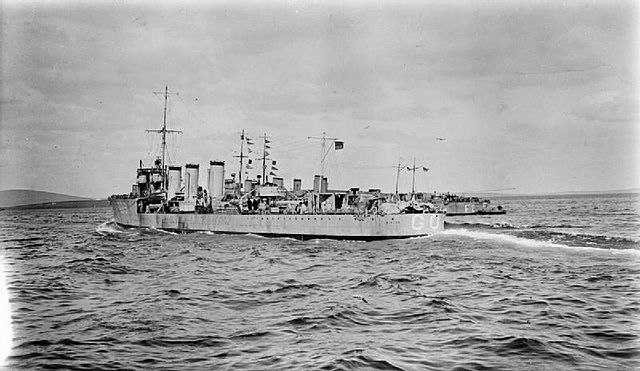HMS Milbrook was an Admiralty M-class destroyer which served in the Royal Navy during the First World War. The M class was an improvement on those of the preceding L class, capable of higher speed. The destroyer was launched in 1915 and joined the Eleventh Destroyer Flotilla of the Grand Fleet. In 1916, Milbrook responded with the Grand Fleet to the bombardment of Yarmouth and Lowestoft and fought in the Battle of Jutland. During the following year, the warship was transferred to Buncrana to operate under the Commander-in-Chief, Coast of Ireland and, for the remainder of the war, the destroyer escorted convoys that were arriving and departing ports on the Clyde and Mersey to cross the Atlantic. In 1918, the ship was jointly responsible for the destruction of the German submarine UB-124. After the Armistice, Milbrook was placed in reserve before being sold to be broken up in 1921.
Sister ship Minion
Admiralty M-class destroyer
The M class, more properly known as the Admiralty M class, were a class of 85 destroyers built for the Royal Navy of United Kingdom that saw service during World War I. All ships were built to an identical – Admiralty – design, hence the class name. 18 other vessels which were officially included within the 'M' class were built to variant designs by three specialist builders – 10 by Yarrow, 6 by Thornycroft, and 2 by Hawthorn Leslie; these are covered in other articles.
HMS Pasley


